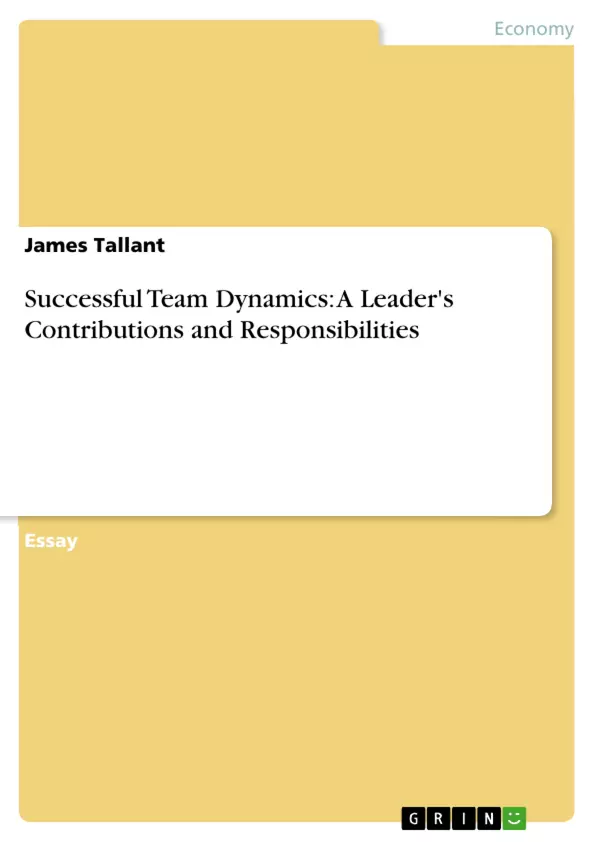Team dynamics and groups are used by multinational to owned locally companies and academic institutions as part of a project to create, develop, or research a new product, procedure or solution. Regardless of the environment, team dynamics is a growing trend. Realizing that results from a successful learning team as a whole outweigh any possible results from the team’s individual members by themselves only adds value to the team dynamics concept. A successful team dynamics completion can only be accomplished by the supervision of an excellent team leader. Orchestrating a successful team through its life cycle is difficult and takes a special person to lead the team. A successful team leader’s contributions and responsibilities are varied. However, according to (Johnson, 2005), “Successful team leadership is not just about accomplishing tasks. Team dynamic leadership is about accomplishing both tasks and fostering relationships.” The contributions and responsibilities of the leader to the team dynamics system are the ability to provide leadership, focus, coordination, and most important communication
Inhaltsverzeichnis (Table of Contents)
- Successful Team Dynamics
- A Leader's Contribution and Responsibilities
- Leadership and Coaching
- Focus
- Coordination
- Communication
Zielsetzung und Themenschwerpunkte (Objectives and Key Themes)
This document examines the vital role of a leader in shaping successful team dynamics. The author delves into the responsibilities and contributions that a team leader must undertake to ensure the effectiveness and progress of a team. The focus is on the leader's ability to guide, inspire, and manage the team, fostering a positive and productive environment.
- Leadership and Coaching
- Team Focus
- Coordination
- Communication
- Problem Solving and Collaboration
Zusammenfassung der Kapitel (Chapter Summaries)
The text highlights the importance of leadership in team dynamics and explores the specific contributions of an effective team leader. The author emphasizes the significance of a leader's role in establishing a clear vision, fostering open communication, and ensuring the team's focus and coordination.
The chapter discusses how a leader must balance the individual needs of team members with the overall goals of the team, using effective communication to manage conflict and ensure all voices are heard. The importance of providing clear direction and resources to the team, while also promoting a sense of camaraderie and recognition for achievements, is emphasized. The text explores how a leader's ability to coordinate schedules, meetings, and information is crucial for maintaining team focus and efficiency.
The text also emphasizes the importance of open and regular communication as a cornerstone of successful team dynamics. The author stresses that the leader should actively communicate with the team regarding progress, challenges, and expectations, ensuring that all team members feel valued and included.
Schlüsselwörter (Keywords)
This document focuses on the concept of team dynamics and the critical role that effective leadership plays in its success. Key topics explored include leadership, coaching, focus, coordination, communication, problem solving, collaboration, and the importance of fostering a positive and productive team environment.
- Citation du texte
- James Tallant (Auteur), 2008, Successful Team Dynamics: A Leader's Contributions and Responsibilities, Munich, GRIN Verlag, https://www.grin.com/document/167468



